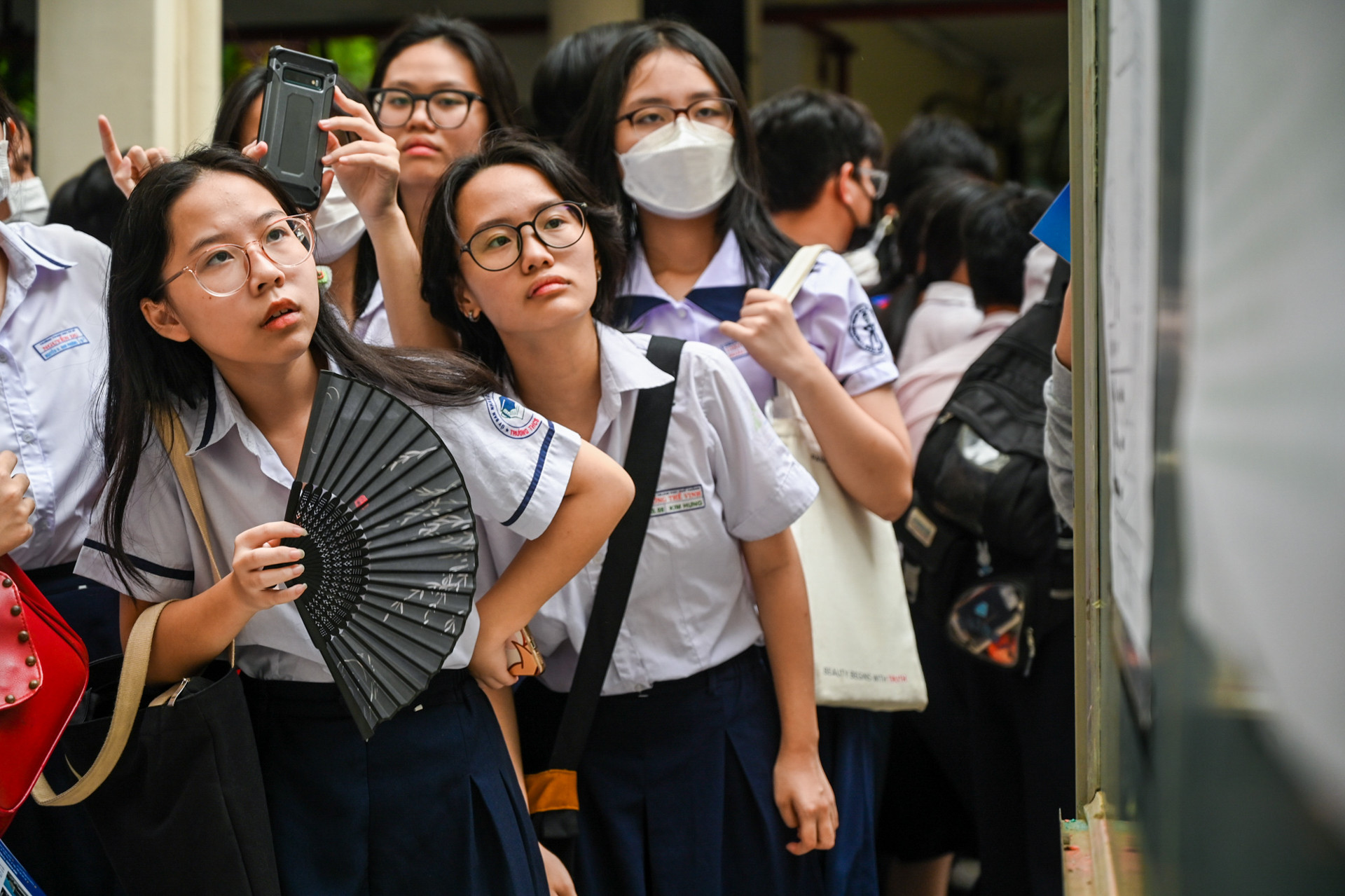
Examining the approach to organizing general education and university admissions in Vietnam, a significant question arises: Is the rigid model of dividing streams and subject combinations, which favors either natural sciences or social sciences, still suitable for the needs of developing 21st-century human resources? Does it counteract the 2018 General Education Program?
For a long time, general education in Vietnam has been tied to career-oriented streaming. Recently, the 2018 General Education Program has been integrated at the secondary education level, becoming more specialized at the high school education level, and divided based on students’ career aspirations toward social sciences, natural sciences (or STEM), starting from grade 10.
These subject combinations, set by universities, allow students to specialize in certain fields of study, and they are used in conjunction with high school finals scores to determine admission.
With the model, students are placed on predetermined “tracks” with familiar subject combinations corresponding to groups A, B, C, and D. Group A, for example, focuses on natural sciences (mathematics, physics, and chemistry); Group C focuses purely on social sciences (literature, history, and geography).
This streaming was once considered a progressive step in 20th-century education, aimed at early career orientation for students. However, in the current context, it is becoming a significant obstacle to the comprehensive development of learners’ competencies.
The division of streams and groups of exams leads to severe imbalanced learning due to the orientation and existence of admission combinations for majors. Students leaning toward natural sciences have little opportunity to gain adequate knowledge of humanities and social sciences, while those in social sciences lack foundational knowledge in science, technology, and engineering.
As a result, we are creating generations that may lack the ability to think multidimensionally, balance and flexibility in thinking, which is especially required in the 21st century.
More concerning, this model contradicts the global trend of interdisciplinary integration. In reality, almost no product or service today stems from a single scientific field. For instance, a smartphone is not only a product of technology (natural sciences) but also incorporates elements of sociology, psychology, and user experience design (social sciences). This is referred to in higher education as “the human factor in design.”
The fields such as healthcare, education, economics, and even pure sciences increasingly require close integration between these seemingly separate domains. Thus, interdisciplinary collaboration and the ability to integrate knowledge from multiple fields are critical for workers.
If considering developed countries, almost none maintain a rigid system of dividing exam groups and university admissions like Vietnam. For example, the education systems in the US and Canada allow students to flexibly and diversely choose subjects throughout high school, combining STEM (science, technology, engineering, mathematics) and humanities-social sciences.
Countries like Finland, the UK, Australia, and the Netherlands emphasize multidimensional general education, giving students opportunities to explore and experiment with various fields before making long-term career choices. The International Baccalaureate (IB) program is a clear example of fostering comprehensive competencies, deeply integrating natural sciences, social sciences, arts, and life skills, widely recognized by top universities worldwide.
So why does Vietnam still maintain such a traditional and rigid system? One reason may be that educational management thinking is still influenced by past habits, prioritizing easily measurable and manageable metrics over developing comprehensive, diverse, and flexible competencies for students. Additionally, there is a lingering preference for “specialization,” while the world has shifted toward an era of integration and interdisciplinarity.
The immediate consequence is that Vietnamese students lack flexibility and face challenges integrating into the rapidly changing global labor market. Moreover, it turns general education into mere conventional pathways rather than a foundation for comprehensive intellectual development, producing human resources that struggle to meet the stringent demands of the modern world.
What should Vietnam do?
Vietnam needs to boldly reform the organization of education and admissions. The university admission system should rely on comprehensive competency assessments rather than rigid subject combinations. It should incorporate academic performance across a broader range of subjects, not just three as currently practiced, through comprehensive competency exams.
Changing the mindset of educational management is crucial. The mission of general education should not be rigid, unscientific “early orientation” but preparing students for adaptability and lifelong learning.
Hoang Ngoc Vinh, former Director of the Department of Professional Education (Ministry of Education and Training)